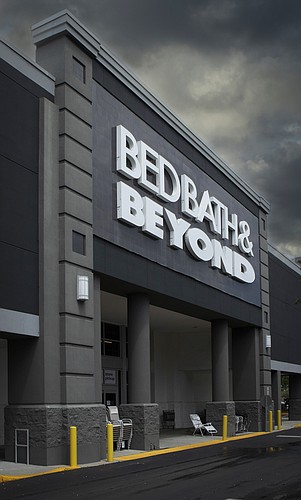Landlords across Florida woke up the morning of April 24 to news that Bed Bath & Beyond, a major, sometimes even anchor, tenant at more than 40 shopping centers had filed for bankruptcy and would begin winding down and closing 41 stores statewide.
The bankruptcy and the planned closings, which affect 14 stores from Pasco County south to Collier County, may not have come as a total surprise given the retailer’s recent history. But the departure, on the surface at least, does present a challenge for property owners who will soon be left with vacant spaces and the possibility rent payments will be missed.
Yet for many of these owners, the closing of what was once a retail institution may not be all bad news. Sure, the process could be lengthy and possibly expensive, but in the long run the landlords may see the chain’s departure as an advantage given the company’s lackluster sales combined with low vacancy rates along the west coast of Florida and high demand for retail space.
“You know, the real estate's attractive. Their sites will be alluring for new tenants,” says Jeffrey Dervech, president of the Tampa commercial real estate firm Dervech Real Estate, which specializes in shopping centers.
“Landlords will be able to get better tenants, higher drivers of traffic, higher rents… all of these are going to be looked at as opportunities and every single one will be different in its own right.”
New Jersey-based Bed Bath & Beyond filed for chapter 11 bankruptcy April 23. In a statement issued by the company that Sunday night, the retailer said it had secured $240 million in debtor-in-possession financing from Sixth Street Specialty Lending. And it said it would begin an “orderly wind down of its businesses while conducting a limited marketing process to solicit interest in one or more sales of some or all of its assets.”
That wind down includes shutting down its remaining 370 Bed Bath & Beyond and 120 Buybuy Baby stores in the U.S. (The company has seven Buybuy Baby locations in Florida, including one in Brandon.)
In court papers filed as part of the initial Chapter 11 filing with the United States Bankruptcy Court for the District of New Jersey, the company says the closings are a result of an “unsuccessful foray into private label merchandise development” and consumers moving away from brick-and-mortar stores.
It also says in the filing that there is the possibility a buyer could step in and, in the meantime, it expects the store liquidation process to generate about $718 million in sales.
“Given the expenses associated with a substantial brick-and-mortar presence, and the issues affecting the retail industry as a whole, a significant number of the (company’s) stores are operating at suboptimal performance levels,” the retailer says in the filing.
But the company’s well documented problems paint a different picture. Yes, sales have faltered at stores but one of Bed Bath & Beyond’s biggest issues was it failed to adjust fast enough to omnichannel retail — the practice of reaching shoppers across several platforms.
Not that it didn’t try.
In January, company president and CEO Sue Grove said in a note to investors that a new turnaround plan “enables us to refocus merchandising and inventory, operate more efficiently and grow our digital and omni-capabilities.”
The problem was that it was too late because competitors like T.J. Maxx and Target had long adopted an omnichannel strategy and over the years had been perfecting it.
When Grove made the announcement, Diginomica, a British firm of analysts focused on enterprise leaders, wrote that two years earlier it had written a headline referring to the company as “Bed, Bath & Beyond Hope” because the “retailer’s tortuous attempts at omnichannel transformation hit problem after problem.”
“It’s a bold attempt to create some kind of positive perception, but the reality is very different. It’s over. Done. Put a fork in it,” Stuart Lauchlan, Diginomica’s co-founder, wrote of the January plan.
“Bed Bath & Beyond will stand as a testament to how not to execute an omnichannel transformation in a new age of retail. It failed to recognize the digital revolution early enough, sticking to its paper coupon business model. As customers moved online, Bed Bath & Beyond opened more and more physical stores.”
The retailer’s problems were also dragging down shopping centers that rely on big box tenants to help draw traffic and raise the profile of other merchants. With Bed Bath & Beyond leaving, these landlords can now focus on bringing in retailers like T.J. Maxx or HomeGoods, high-end gym chains or grocery stores that fit in the space and attract tenants.
Couple that with the fact that many of the stores had been open for years, with long-term leases at reduced rates, and this may be the rare case where losing an anchor tenant may not turn out to be a bad thing.
“Landlords sometimes benefit with space opening up that can now be leased (at) market rates and increase the value of the property,” says Nelson Taylor, vice president of market research for the Fort Myers commercial real estate firm LSI Cos.
“Being a dying brand, opening a 30,000 square foot floor plate to a new tenant (that) can draw foot traffic to a shopping center will be a benefit. I think most landlords were ready for them to exit and open the space up to more stable tenant brands.”







